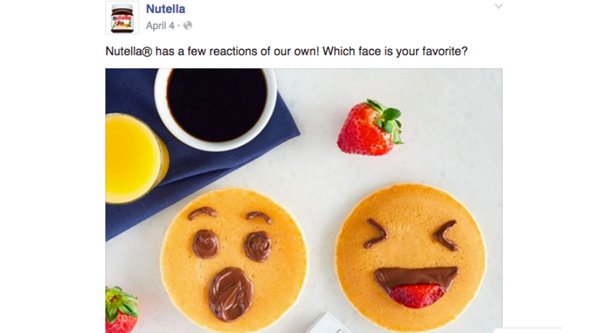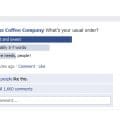For some people, the concept of “a post you make on social media should be emotionally resonant” is a new awakening. It opens wondrous doors to think about. Imagine how much more engagement you could get when you bring emotion into it, rather than just relying on some dry value proposition?
For others, emotional response has been an old friend in marketing, and it’s not about whether or not to include emotion, but rather which one. That’s where modern studies come into the picture.
Facebook Reactions
Facebook has long had the Like button, and for years people joked about them adding a dislike button, making the up and downvote wars similar to what we see on Reddit or Imgur or any of a hundred other content platforms.
In 2016, Facebook acknowledged the need to represent other emotions beyond “I like this.” People post sad news all the time, people post things that make them angry, and the lack of robust reaction options led to lower engagement across the board. Some people would like a post and then comment to specify “I liked it for sympathy, not because I like the bad news.” Other people would simply forego liking the post at all.
The answer, introduced in 2016, was the modern reaction bar. Now, rather than just a like, you can add one of several different reactions.
- Like. This is the traditional like, and is the default if you just click or tap the button rather than hovering it or holding it to select something different, and as such is generally going to have the highest count on any post.
- Love. This is an expression of deeper enjoyment, appreciation, or positive emotion than the like. People often react with love for great news.
- Haha. This is the laughing emoji and is a reaction meant to express appreciation for the humor in a post. People reach Haha to funny posts, jokes, memes, and to the suffering of others they disparage.
- Wow. This is a shocked reaction and tends to express incredulity or wonder. People use this as a shorthand for “I can’t believe this”, for anything from a huge global event to a recipe they found particularly interesting.
- Sad. This is one of two “negative” reactions, meant to show sympathy with a post. People use the sad reaction on posts expressing bad news, like the passing of a family member or the closing of a beloved local business.
- Angry. This is the other “negative” reaction and is meant to express anger with a post. Someone talking about being harassed or getting in a car accident might express anger. Anger is also often used for anything with a bias, be it sports news or political posts.
Mechanically, reactions are almost but not quite identical to likes. Every reaction counts as +1 engagement action. The only difference is that now you can see the people who react in different ways, on a limited basis.
However, Facebook has stated that they weigh reactions versus likes differently. A like is a very basic reaction and is seen as “low effort, low engagement” compared to reactions. If someone uses a Love, Haha, Sad, Angry, or Wow reaction for a post, the engagement is weighed more strongly in the Facebook algorithm. You can read Facebook’s statement on the subject here.
Facebook occasionally changes the design of the reactions themselves, but never changes what they are specifically. For example, they changed the emojis representing each icon into Star Trek inspired designs for the 50th anniversary of the show, but they are still like/love/haha/wow/sad/angry.
Reactions can be used to gauge user sentiment on a broad basis, though they are notably imprecise. You can roughly measure user sentiment with them, but relying on precise counts is going to be less valuable.
All of this is build-up specifically for me to say that you can use reactions to gauge if a post is funny or if it’s just baseline. If you get more loves and hahas than likes, you probably have a decently funny post on your hands. If all you get are likes, you either have a disengaged audience, or you have an audience that doesn’t resonate with that particular post.
Are Funny Posts Better?
If you browse Facebook for a while, you’ll see a few different kinds of posts. You see a lot of personal family updates, which is to be expected. Facebook has gone on record that, with their upcoming redesign, they want to focus the platform more on friends and family, as well as groups, and less on businesses and the business to consumer relationship. This pivot is almost definitely encouraged by the increasingly disengaged userbase and the slow migration away from the site.
You’ll see news items with all of the reactions that are appropriate to that news. A lot of the most shared news tends to be the most controversial news, which means it will have large numbers of both loves and angry reactions. Take a look at any political post and you’ll see what I mean.
You’ll also see a ton of jokes and memes. There are thousands of pages on Facebook dedicated to nothing but sharing memes and joke posts. Some of them make their own content, but many of them circulate content from each other or steal it from Reddit, Tumblr, Twitter, or Imgur. You can even chart the propagation of a post when you see it originally posted on Twitter or Tumblr, screenshot and posted on Imgur, shared on Reddit, and then circulated on Facebook a few days later.
The question is, is the proliferation of jokes and memes simply because it’s an easy kind of account to run, so there are tons of pages running with that style of content? Or is it because that kind of content performs better, so more people are turning towards the humorous posts in these depressing times?
Fact #1: The two most common reactions on Facebook are Love and Haha. Those two reactions combined make up 81% of the total reactions to Facebook video, which is a microcosm of Facebook as a whole.
Fact #2: According to a major study of over 777 million Facebook posts, the content that receives the most engagement on Facebook in general is inspirational, funny, or practical.
- Inspirational posts tend to be motivational, inspiring, or diverse. They support people. They encourage people. They encourage diversity and inclusion. They strive to fight the hate that is rampant in today’s political climate and on today’s social media platforms.
- Funny content can be everything from videos with physical comedy or magic, to meme posts that are borderline nonsense. This is where one key takeaway comes in: a post doesn’t have to be funny to everyone to perform well, it just has to resonate with enough of your audience to perform well. Simple memes and jokes work just fine, as long as they’re better than a post that isn’t funny at all.
- Practical content, meanwhile, tends to lean heavily on the video tutorial. Lifehack-style content and recipe/food porn content are two primary examples of this kind of content. They’re excellent for engaging users who either want to try it, have a story about trying it, or have ideas for improving it. And, sure, some people disparage lifehacks by pointing out more commercialized ways to accomplish the same goal, but hey; that’s still engagement, baby!
Incidentally, in the study I linked above, you can see the top 10 most engaged posts on Facebook for 2018, as well as a deeper look at four of them, complete with lessons you can learn from them. I don’t feel the need to go over what Buffer covered exceptionally well, so just go check out their review.
In another study from Buffer, they went into the biochemistry and psychology of social media. They broke it up into four sections; why people post, why people share, why people comment, and why people like content on social media. I’m only concerned with the last three, since for a business the first one is “to sell.”
Why do people share content on social media? There are a few different reasons.
- Many people share content on social media as a means of self-expressions. The content you share is a reflection of who you are and what values you hold. Your friends can see and engage with this, which helps strengthen your connection with those people.
- People often share as a way to accumulate an intangible social currency or reputation. When you share something and your friends like it, you feel good about it. Brands take advantage of this by having something interesting to say.
And why do people like content on social media?
- People use reactions to show that they see and care about the people whose content they follow. A like is a simple way to say “I’m here and I see your posts.” It helps people stay connected to one another.
- Some people react to posts as a way to encourage reciprocity. If I’m liking your content, it encourages you to come check out my content and like my posts in return. Again, it strengthens connections.
- Of course, most people react to content to show their emotional perspective regarding the post itself. If people think it’s funny, they react with a “haha”. If people hate it, they react with anger.
Comments, of course, have their own driving factors.
- Contrary to brand perspective, most users don’t feel a connection or relationship with a brand, and even fewer cite frequent comments as part of the relationship they have.
- Many people read comments and write their own as a way to help process information. Comments allow them to understand a potentially complex situation with more nuance, or with any nuance at all. Comments can change our minds, and frequently form the basis for opinions.
- Comments also help drive the impression of a brand as a whole. Even baseless accusations can hurt the sentiment of a brand, while polite reviews can increase how much people are willing to pay for a product.
All of this is important to help you understand how to approach creating posts that get more engagement.
How to Make Funny Posts
So how can you make funny posts, to capitalize on the engagement you get out of them? Well, for one, having a sense of humor helps. It’s not crucial, though, simply because so much of the humor of younger generations is basically nonsense. How many thousands of people laughed at a nonsensical picture of a frog on a unicycle? How many people found endless humor in random pictures of a fat Bugs Bunny? How many millions of views did thousands of different videos of a cartoon cat playing music get across all of Facebook?
The bar for creating something funny is quite low, but a huge part of it comes from understanding your audience. Different demographics, and particularly different age groups, have very different senses of humor. Know your audience and learn what they find amusing, and follow that trend.
I also strongly recommend you keep your humor as benign as possible. There’s a lot of humor out there that is racist, sexist, or offensive in some way. As a brand, it’s never good to post that kind of content, even if your users might like it, because the outcry can be devastating.
Keeping your humor “in-house” is a good idea as well. A restaurant can play around with food humor, but might not be able to swing a post about sports humor as well.
Finally, use humor in moderation. Memes might be great for engagement, but if people forget you’re a brand and only recognize your memes, you’re not getting users to buy your products.








